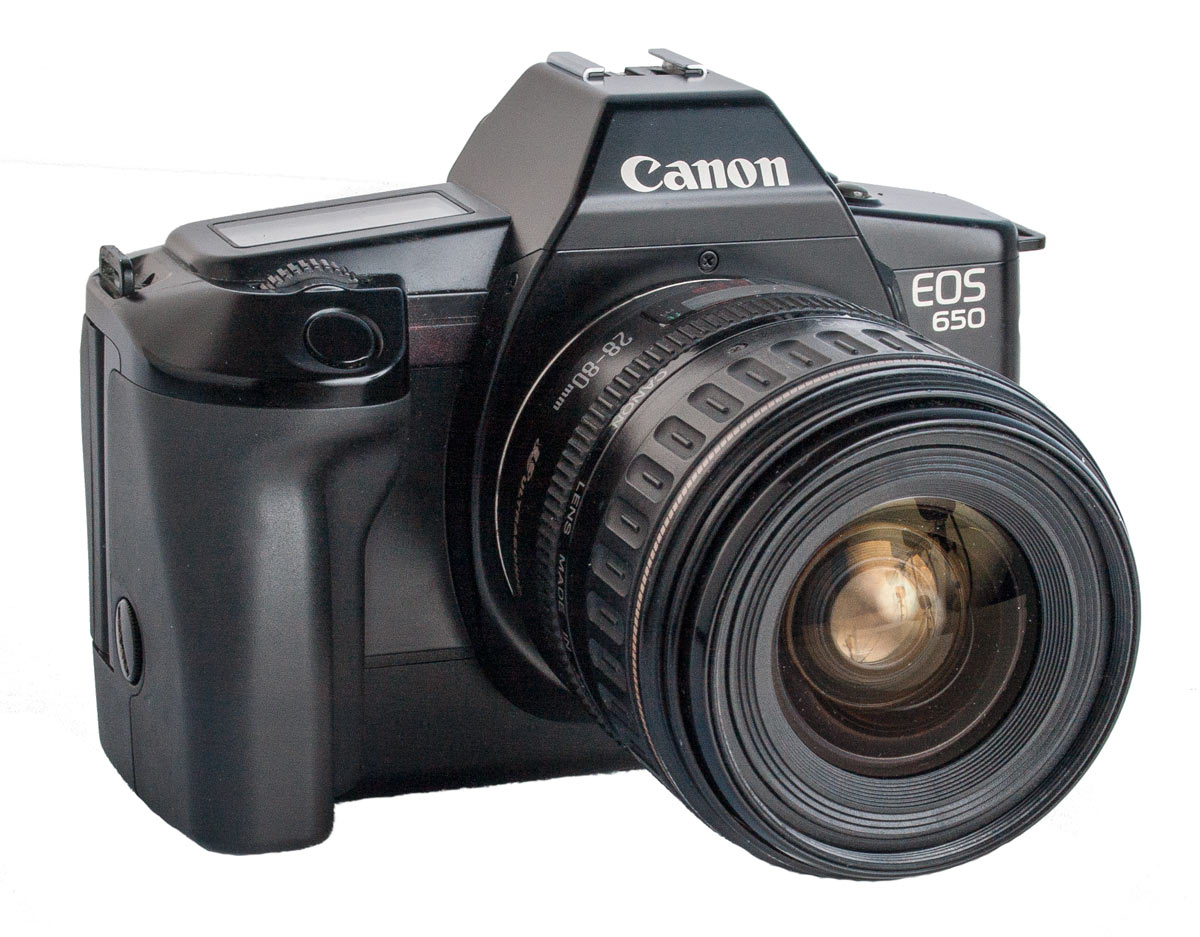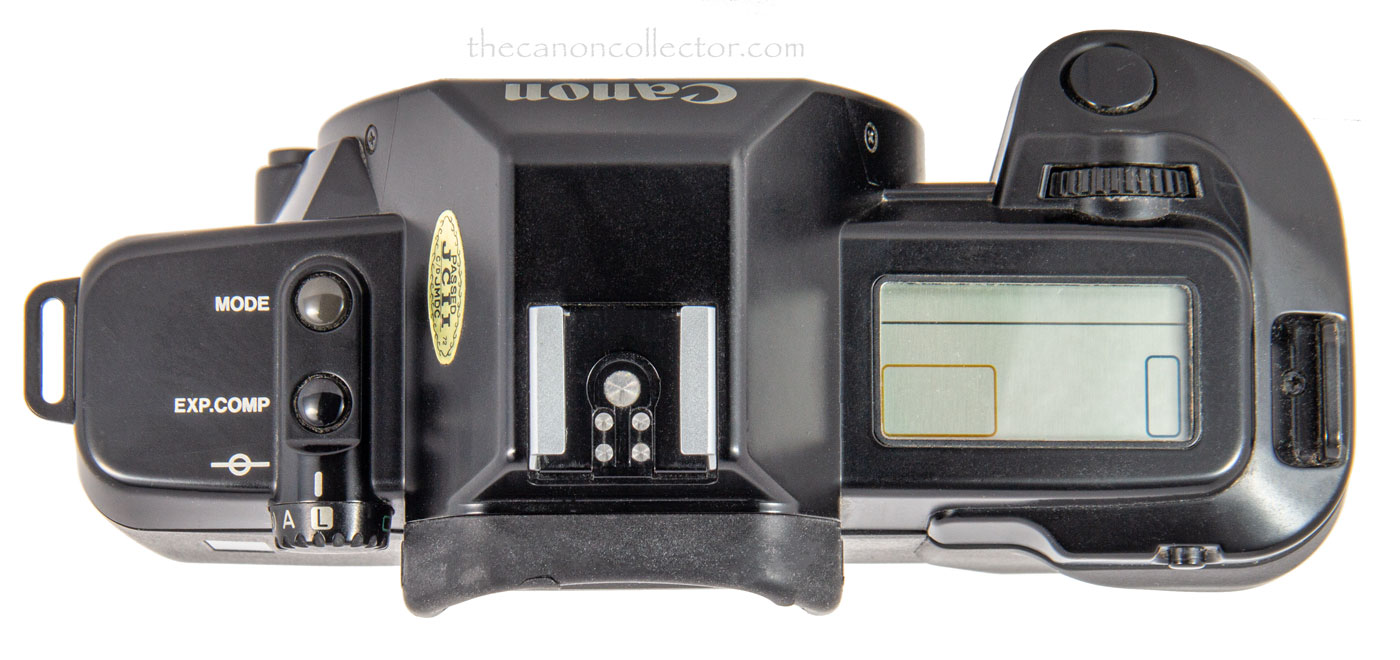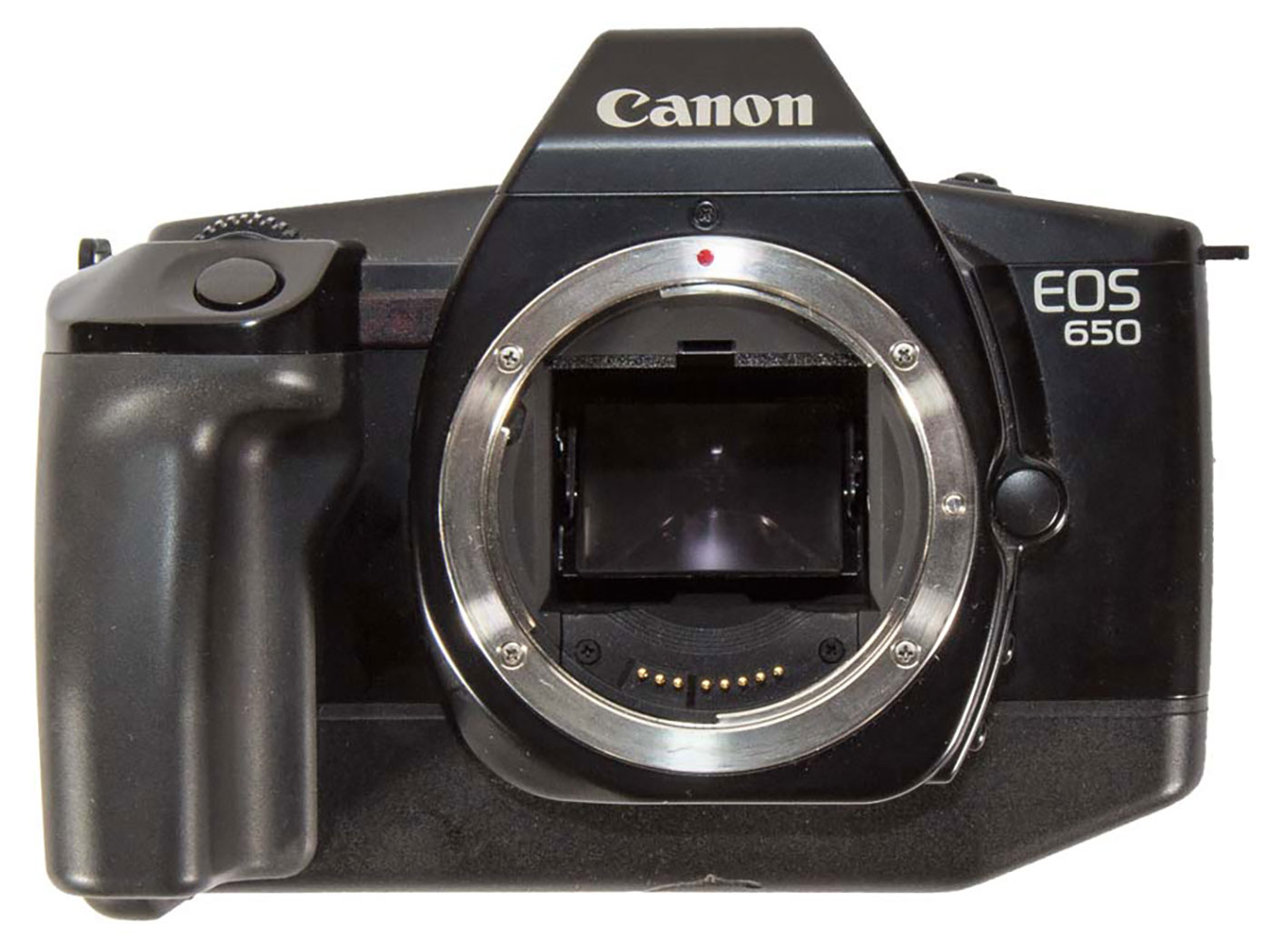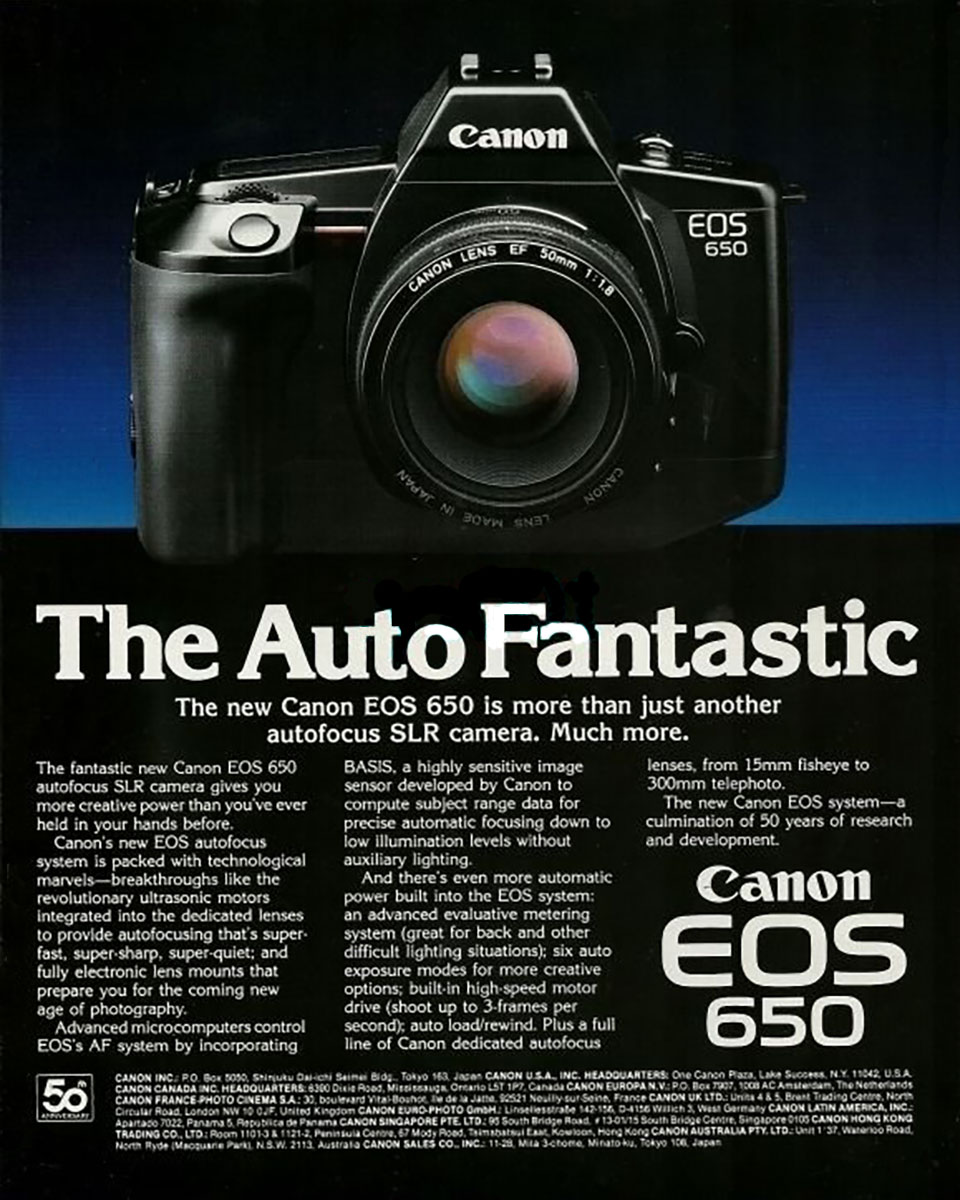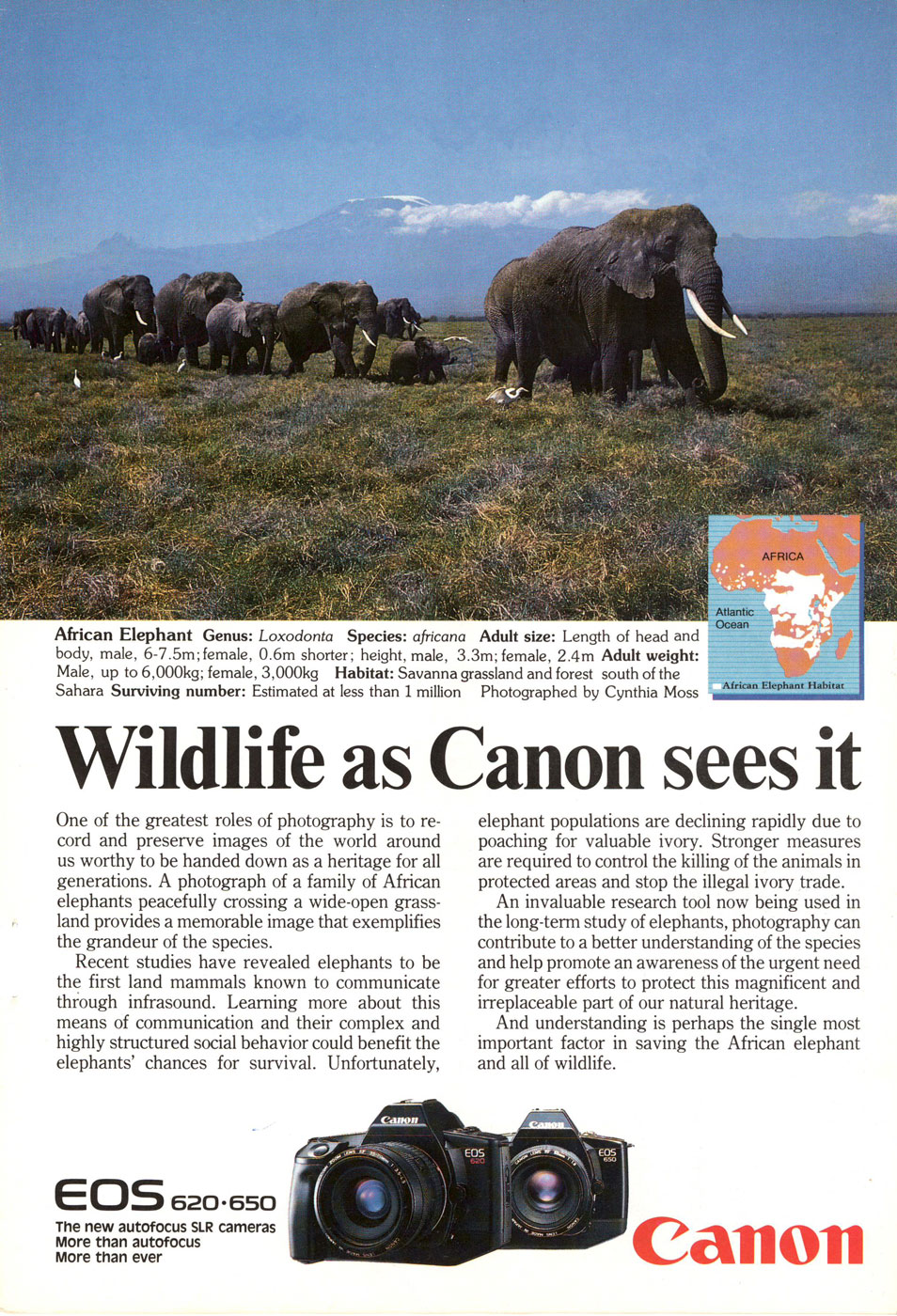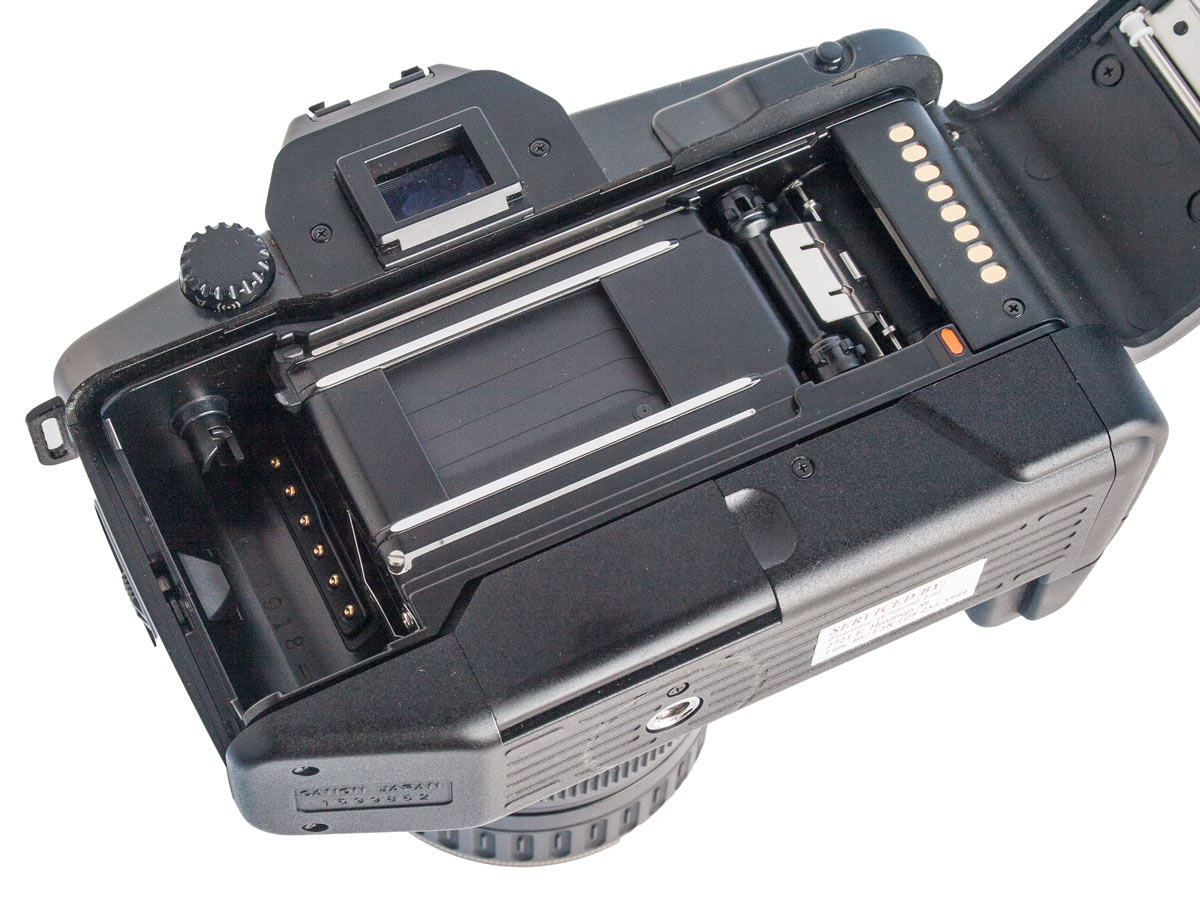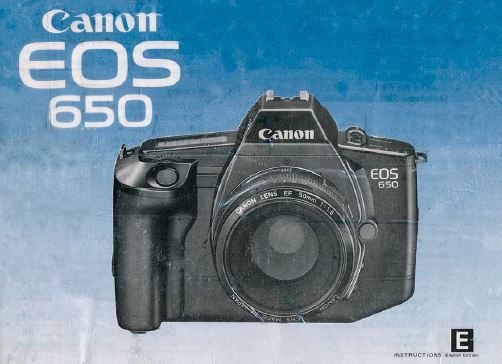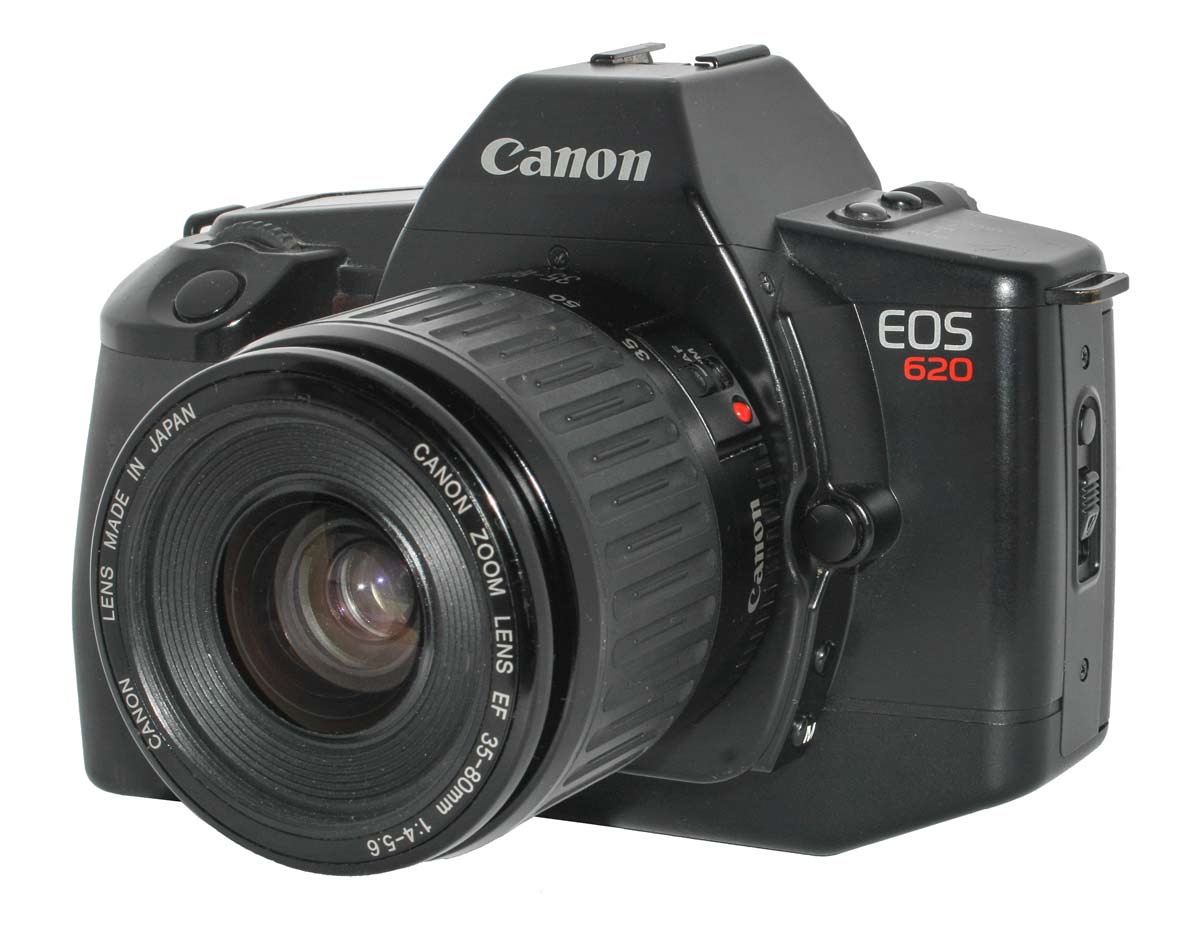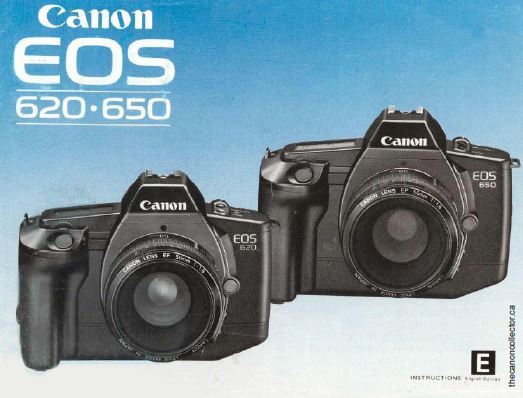This is my Canon EOS 650, Serial No.: 1526727. The camera is in excellent condition and fully functional.
The T90 not only looks like an EOS camera but it was, with the exception of the auto focus feature, the equivalent of the EOS film cameras. It was automatic, had equivalent features and was a joy to use.
The new EF lens mount on the EOS 650 lacks the levers and physical communication with the body of the FD mount. There are just eight electrical contacts on the lens that make contact with the pins in the body.
Camera settings were selected by use of the Mode Button and the Electronic Input Dial shown just below the shutter button. Settings were shown on the large LCD screen.
Canon EOS 650
We tend to have the impression that truly professional cameras began with the EOS
series but that is an illusion suffered by those who have never shot film with the T90.
There have been few revolutions in the development of the Canon camera:
it has been a story of evolution.
In February of 1986 Canon introduced
the T90 camera which was, arguably,
a superior camera to the first of the EOS cameras. When the first EOS, the EOS 650, was introduced in March of 1987 it was very much modeled on the earlier T90 with its FD lens mount. The only news was the auto focus.
The 650 is a heavy solid camera that has the Canon feel of quality. A 5D Mk IV user will feel right at home with it. The most obvious thing about this camera is the new EF lens mount which dispenses with buttons and levers
and instead has eight electrical contacts for communication with the EF lens which
operates totally by electrical signals between lens and body. All EF lenses, even the latest
and most modern, will function on this
camera. And lens stabilization will be fully functional which is a mystery to me!
The 650 has several operating modes. Of course it can be operated as a fully automatic “point and shoot” or it can operate in Aperture Priority, Shutter Priority and Manual where the operator can chose shutter and aperture manually. What else do you need to take great pictures?
The size of the EF mounting ring relative to the camera body is very apparent. This larger diameter gave room for lens designers to create new faster more perfect lenses for these new cameras.
The bottom of the camera has only the tripod socket. The 2CR5 battery was inserted by removing the finger grip on the front of the camera.
The EF lenses arrived on the market with excellent auto focus capability. Certainly this first EOS camera did not have the speed or accuracy of today’s cameras but in good light it is more than adequate. When there is sufficient light the focus is fast and accurate. And the more modern the lenses the better the performance. And, surprisingly, the image stabilization in later lenses functions with this camera. What a bonus!
The camera will read film DX Codes for films between ISO 25 to 5000 and set the film speed accordingly. The user may set the ISO manually if there is no DX Code. In that case the range available is 6 to 6400.
And, of course, the camera has a host of other features, such as exposure compensation or an electronic shutter delay timer. The Instruction Booklet contains the details of operating this camera.
In the film compartment on the left can be seen the sensing contacts to read the film’s DX Code. On the righ by the back hinge can be seen a row of contacts for various backs available for the 650.
The Camera Instructions will give you the complete operating instructions. Once the 620 was introduced in May of 87 the two manuals were combined into one which is available below.
The Canon Museum says that in September of 1987 the EOS 650 QD was released. I have not seen a 650 QD in my travels and I cannot find a photograph of one online.
One possibility is that they are not common and I just have to keep looking. Or …. they were not actually marked on the camera as a QD. I have an EOS 630 with a “Quartz Date Back E” on it but it is not labeled as a QD camera. I wonder if the 650 QD was simply not labeled as such. The Instruction Booklet for the 650
says that there were two additional backs available for the camera: the
Quartz Date Back and the Technical Back E.
One of the great attractions of the EOS 650 is the range of lenses that will function with it. Here it is shown with an EF 70-200mm f/2.8 L USM IS from 2001. This camera will work with all available EOS lenses. Autofocus may be slower than on modern cameras but it is adequate and very accurate. For anyone wanting to shoot 35mm film today this is a great advantage to this camera.
Possibly the camera the Museum is referencing is simply a 650 with a Quartz Date Back E on it. Something else to search for! this is why the collecting of cameras is so much fun.
A small thing to note: the EOS 650 body, all of them, are set up for a Date Back. Look at the image of the open camera on the left above. At the right edge of the body, next to the hinge, there are eight oval contacts. The various date backs make contact with these electrical connections to communicate with the body.
The Camera Instructions will give you the complete operating instructions. The 620 and 650 were so similar that they used a combined manual after the introduction of the 620 a few months after the 650.
Canon EOS 620
Two months after Canon introduced the EOS 650, in May of 1987, it made a few changes, a couple of what they called improvements, to the 650 and introduced that as the EOS 620. But the cameras are so similar that they shared a common Instruction Manual after the 620 came out.
The 620 added illumination for the LCD on the top deck which Canon says was a first in a camera. A second change was to add the ability to shift the Program AE setting. Once the camera chose its shutter speed and aperture the user could move the settings to adjust shutter speed or aperture.
Another feature was the ability to auto bracket exposure up to plus or minus 5 stops. The camera takes three exposures with normal exposure, one over exposed and one under exposed. Although it was not a thing in those days, this is now called HDR bracketing. And remember, we are talking about a film camera.
Finally the camera was given the ability to shoot up to 9 overlapping or multiple exposures. Not a feature the average user will find a need for.
Finally, in the 620 Canon dropped the “Depth” mode which allowed the user to select a near point and a far oint and the camera would then attempt to select an aperture that would keep everything in between to be in focus. I understand why they dropped it. It is not something I would use myself.
In all other respects the 620 and the 650 are identical cameras and, externally, except for the name printed on the outside of the camera, they are identical.
As a user intending to shoot film with one of these cameras, I feel there is nothing important in the choice. They will both be excellent cameras.
This website is the work of R. Flynn Marr who is solely responsible for its contents which are subject to his claim of copyright. User Manuals, Brochures and Advertising Materials of Canon and other manufacturers available on this site are subject to the copyright claims and are the property of Canon and other manufacturers and they are offered here for personal use only.

